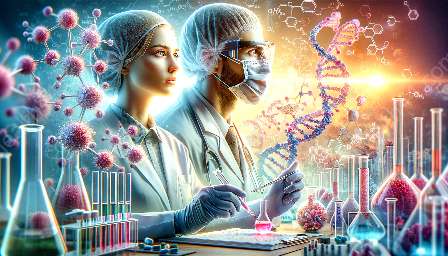Drug metabolism is a crucial process in medicinal chemistry and pharmacy. Understanding how drugs are metabolized and transformed in the body is essential for predicting their efficacy, safety, and potential interactions.
Overview of Drug Metabolism
Drug metabolism, also known as xenobiotic metabolism, refers to the chemical alteration of drugs by the body. This process primarily occurs in the liver, although some metabolism may take place in other organs, such as the kidneys and the intestines.
The main objectives of drug metabolism include:
- Conversion of lipophilic (fat-soluble) drugs into hydrophilic (water-soluble) compounds for easier excretion
- Activation of prodrugs into their active forms
- Detoxification of drugs to reduce their pharmacological activity and facilitate elimination
There are two main phases of drug metabolism:
- Phase I Metabolism: This phase involves functionalization reactions, such as oxidation, reduction, and hydrolysis, carried out mainly by enzymes known as cytochrome P450 (CYP) enzymes. These reactions introduce or unmasks functional groups on the drug molecule, making it more amenable to further modification in phase II metabolism.
- Phase II Metabolism: In this phase, the functionalized drug undergoes conjugation with endogenous molecules, such as glucuronic acid, sulfate, or glutathione, to further increase its water solubility and facilitate elimination from the body.
Importance in Medicinal Chemistry and Pharmacy
The study of drug metabolism is of paramount importance in medicinal chemistry and pharmacy due to the following reasons:
- Pharmacokinetics: Drug metabolism significantly influences the pharmacokinetics of a drug, including its absorption, distribution, metabolism, and excretion (ADME) profiles. Understanding the metabolic pathways of a drug helps in predicting its plasma levels, half-life, and potential interactions with other drugs.
- Drug Design and Optimization: Knowledge of the metabolic fate of drugs guides medicinal chemists in designing molecules with improved metabolic stability, bioavailability, and duration of action. Structure-activity relationship (SAR) studies often take into account potential metabolic liabilities to optimize drug candidates.
- Drug Interactions and Adverse Effects: Many drug interactions and adverse reactions stem from alterations in drug metabolism. Some drugs may inhibit or induce specific metabolic enzymes, leading to unexpected outcomes when co-administered with other medications.
Enzymes Involved in Drug Metabolism
Various enzymes play pivotal roles in drug metabolism. While the cytochrome P450 enzymes are the most well-known metabolic catalysts, other enzymes, such as UDP-glucuronosyltransferases (UGTs), sulfotransferases, and glutathione S-transferases, are equally vital in phase II conjugation reactions.
Notable examples of drug-metabolizing enzymes include:
- Cytochrome P450 Enzymes (CYPs): CYP enzymes are responsible for the metabolism of a diverse array of drugs, and genetic polymorphisms in these enzymes can lead to inter-individual variations in drug metabolism and response.
- UGTs: These enzymes catalyze the conjugation of glucuronic acid to drugs to increase their water solubility. UGT-mediated metabolism is a major pathway for many drugs, including non-steroidal anti-inflammatory drugs (NSAIDs) and opioids.
- Glutathione S-Transferases (GSTs): GSTs play a crucial role in detoxification by facilitating the conjugation of glutathione to drugs, toxins, and reactive intermediates.
Clinical Implications
The concept of drug metabolism has significant clinical implications:
- Personalized Medicine: Understanding the variations in drug metabolism among individuals allows for the implementation of personalized dosing regimens. Genetic testing for drug-metabolizing enzymes can aid in optimizing drug therapy and reducing the risk of adverse events.
- Treatment Efficacy: Some individuals may be poor metabolizers of certain drugs, leading to reduced efficacy, while others may be ultra-rapid metabolizers, potentially experiencing toxicity at standard doses.
- Adverse Drug Reactions: Awareness of potential metabolic pathways for different drugs empowers healthcare professionals to anticipate and manage adverse drug reactions more effectively.
Future Perspectives and Challenges
As the field of drug metabolism continues to evolve, novel approaches, such as in silico prediction of metabolic pathways and the utilization of organ-on-a-chip technologies, are being explored to enhance our understanding of drug metabolism and its implications for drug development and clinical practice.
Challenges in drug metabolism research include:
- Unraveling the complexities of drug metabolism in different populations and disease states
- Assessing the potential for drug-drug interactions and their impact on metabolic pathways
- Developing improved in vitro and in vivo models to accurately predict drug metabolism
It is evident that drug metabolism plays a pivotal role in medicinal chemistry and pharmacy, shaping the way drugs are developed, optimized, and utilized in clinical settings. Embracing the complexities of drug metabolism and its intersection with these fields is essential for advancing drug discovery, improving patient outcomes, and ensuring the safe and effective use of medications.


